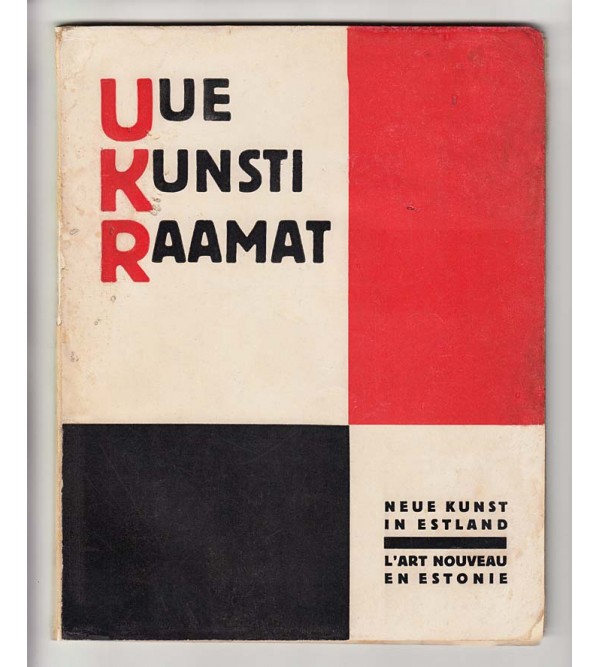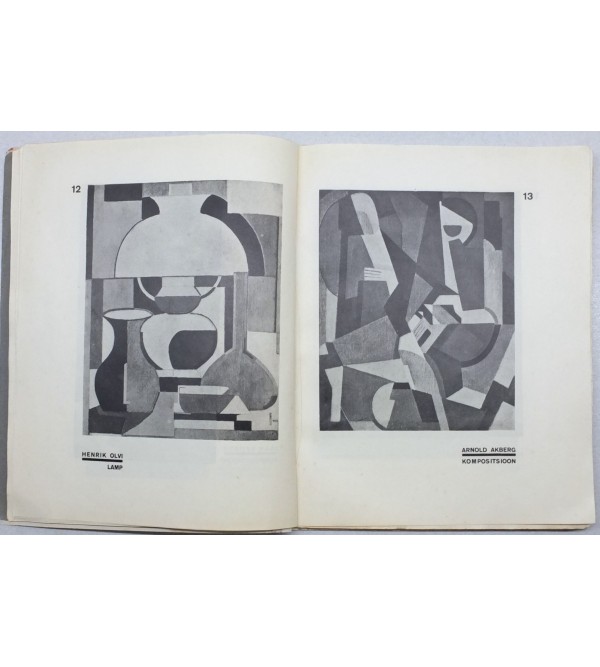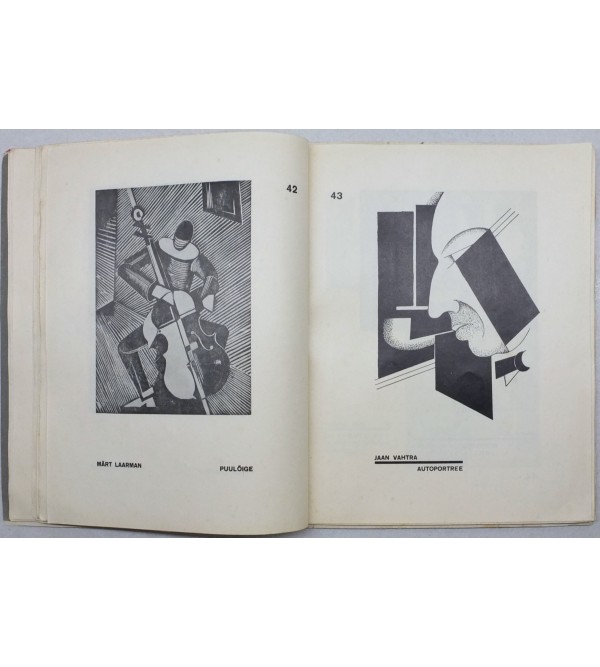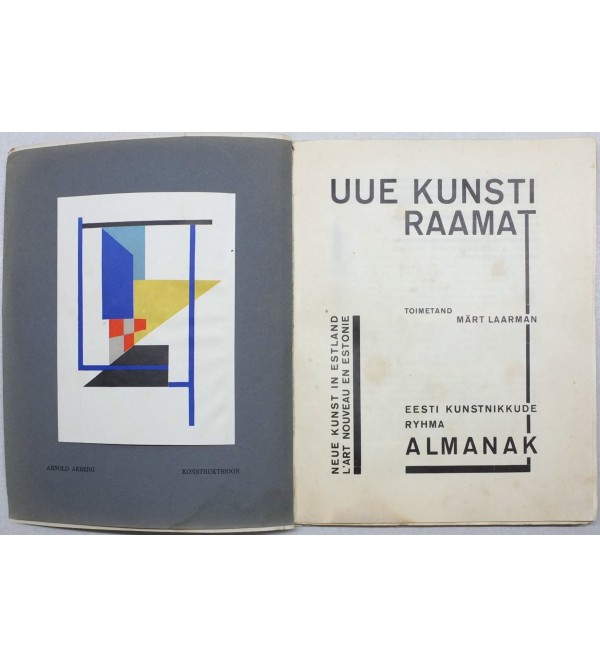Uue kunsti raamat : Eesti Kunstnikkude Ryhma almanak = Neue Kunst in Estland = L'art nouveau en Estonie (The Book of New Art : Almanac of the Group of Estonian Artists)
- 1,600€
- Product Code:90
- Availability:In Stock
Near fine condition; replaced spine, cover shows slight soiling, some creasing across cover corners, minorly frayed upper edge of the cover; internally fingerprints on the bottom outer corners of the pages throughout the book, rub..
Tags: Estonian rare books, first edition books, art albums, avant-garde, constructivism, cubism, futurism, Mart Laarman
Near fine condition; replaced spine, cover shows slight soiling, some creasing across cover corners, minorly frayed upper edge of the cover; internally fingerprints on the bottom outer corners of the pages throughout the book, rubbed owner’s inscription on the title.
Purely abstract cover in red-black-white colors designed by Laarman. An iconic publication of Estonian avant-garde, programmic almanac of the Estonian Artists Group (Eesti Kunstnikkude Ryhm) gave a great contribution to Cubo-Constructivist develompent in Estonia. Uue Kunsti Raamat is not a classical manifesto, because it didn’t postulate and didn’t contain any opposition, but one of the basic texts of Estonian figurative art, functioned partially as propaganda for a domestic audience, and partially as an introduction and explanation of Estonian modernism to foreigners in the fields of painting, aculpture, architecture.
Editor and the core of the Group M. Laarman himself contributes a lengthy introduction to the publication, outlining Group movement’s aims and sources of inspiration. Laarman’s essay followed by a detailed illustrated catalogue of 74 key works by each of the Group members: Arnold Akberg, Jaan Vahtra, Henrik Olvi, Friedrich Hist, Eduard Ole, Felix Johannsen, Märt Laarman himself, Arnold Blumenfeldt, Juhan Raudsepp. J. Raudsepp also contributes a short piece entitled “Sketch of the Aims and Development of the Estonian Artists Group”, in which he concludes with the confident promise that the movement will win further “victories” through repeated exhibition and discussion in the years to come. The book concludes with some brief remarks in French and German from Laarman. He assumes readers that, “The art which we present in these pages is a young as our country, demonstrating the importance of the struggle against old artistic traditions, and our incomprehension at the animosity to experimentation.”
Laarman ensured that copies were sent to influential artists and art critics across Europe, with the art histirian Michel Seuphor and Theo van Doesburg being amongst those to receive copies. The almanac made an impact on the de Stijl movement’s leader, for, as Mai Levin recounts he praised it in terms of design quality and content, and included a favourable review in his own journal. “The design and lay out of Uue Kunsti Raamat closely parallels early issues of De Stijl, with colour reduced to a stark black-white-red schem and the employment of a modern, sans-serif font. The book’s main title, in the Estonian language, marks the orgins of the manifesto for the reader. The inclusion of the same title in both French and German indicate a desire to show Estonian culture in parallel with other European cultures, engaging with them on its own terms. Both French and German are identified by the editor of the journal as the languages of both Constructivist and non-Objective art at this period”.
The manifesto of the Group of Artists remains the only one of its kind in pre-war Estonia. Its pious aspirations and utopian tones are familiar to scholars of modernism over the world. It still functions as a vital guide to the output of the Eesti Kunstnikude Rühm, many of whose works were destroyed during the course of World War Two and by Joseph Stalin’s cultural censors.
| Specification | |
| Title | Uue kunsti raamat : Eesti Kunstnikkude Ryhma almanak = Neue Kunst in Estland = L'art nouveau en Estonie (The Book of New Art : Almanac of the Group of Estonian Artists) |
| Author | Mart Laarman |
| Artist | Mart Laarman |
| Publisher | Eesti Kunstnikkude Ryhm, Tallinn |
| Published year | 1928 |
| Country | Estonia |
| Edition | 1st edition |
| Binding | Soft cover |
| Octavo | Enlarged format 19 x 24 cm |
| Weight | 0.250 kg |
| No. of pages | Wrappers, 80 pp., [1] tipped in illustration plate |
| Language | Estonian language, summaries in French & German |




